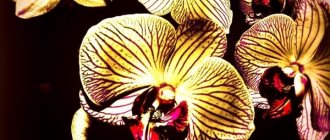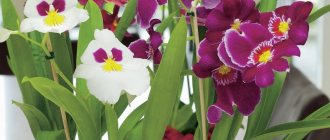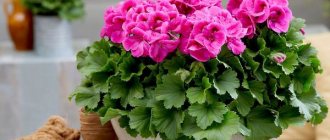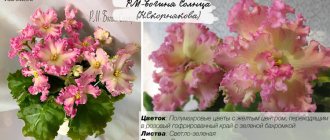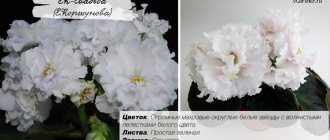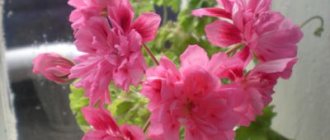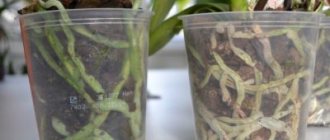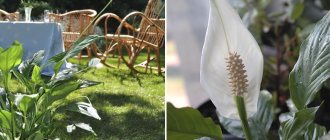How to define a group or class?
There are monopodial
Orchids with a vertical stem growing from a single apical growing point are classified as monopodial types.
They are characterized by the arrangement of juicy, fleshy leaves at the top of the stem, constantly increasing in length. The lower leaves age and droop as they grow, and the younger leaves alternately develop higher on the stem. Buds appear in the leaf axils, from which flower shoots, lateral shoots or aerial roots develop.
The monoploid type includes:
- Brassavola.
- phalaenopsis;
- Wanda;
- Angrecum;
Sympodial with pseudobulbs
Sympodial orchids resemble a climbing vine. Horizontal parts form rhizomes with internodes, vertical shoots form the above-ground part of the plant. Each shoot eventually stops growing in length, its apical bud dies, and new shoots and pseudobulbs appear at the base - above-ground thickenings formed in the internodes of the stem, which serve to store water and nutrients.
Pseudobulbs can be spherical, oval, elongated or flattened.
Sympodial species:
- Miltonia;
- Dendrobium;
- Cattleya;
- Oncidium.
Cascade or ampelous
Ampelous species are characterized by abundant flowering, long slender flower stems with abundant inflorescences and flowers located along the entire length of the flower stem:
- celogyne.
- grammatophyllum;
- dendrobium;
- cymbidium;
For indoor growing in a pot
Most types of orchids are suitable for growing at home. They differ from wild varieties in more lush vegetation and richly colored, large, thickened leaves:
- Cattleya;
- phalaenopsis;
- Miltonia;
- Cumbria.
Refers to street or garden
Garden orchids thrive in moderately warm climates; some hybrids are frost-resistant.
Curtains of low-growing herbaceous orchids in open ground are used in landscape design, but a single flower can decorate any flower bed:
- Tricyrtis.
- Cypripedium;
- Palchatocorynium;
- orchid;
Fragrant
Vanilla
The scent of orchids is designed to attract insects. Some plants have a very unpleasant amber scent, but most species emit spicy, honey, chocolate and fruity aromas. Some species emit scent only at certain times of the day, others only at the beginning of flowering.
Wild species have a strong odor, while domestic plants have a much weaker odor:
- zygopetalum;
- vanilla;
- arachnis;
- catazetum.
Midi, standard and mini
Among some species and hybrids of orchids, division into classes according to size is accepted:
- Mini - miniature orchids up to 20 cm high, with slender fifteen-centimeter flower stems, abundantly strewn with small flowers 3-5 cm in diameter.
- A standard orchid has a height of 60 to 80 centimeters, large flowers up to 15 centimeters in diameter and long pedicels up to 40 centimeters. Most orchids on sale come in a standard size.
- Midi is a compact plant up to 50 cm high. Flower stems reach a diameter of 30 cm, and flower buds - 6-8 cm.
You can read more about mini orchids here. In this article you will learn more about miniature phalaenopsis varieties.
Miniature varieties include:
- phalaenopsis;
- Cattleya;
- Dendrobium;
- Cymbidium;
- Oncidium.
With large and small flowers
Ludisia jewelica
The beauty of an orchid lies in its unusual colors. Large single flowers bloom only at the top of the peduncle; small spiral false inflorescences in the shape of bells or spikes often decorate the entire length of the peduncle.
Large-flowered orchids:
- Cymbidium.
- phalaenopsis;
- Cattleya;
- Cumbria;
Small-flowered varieties:
- rhynhostilis;
- Sidiraea japonica;
- Ludisia;
- orchid.
Character traits
Bumblebees are friendly and peaceful animals.
Bumblebees live in small flocks. Often the total number of individuals does not exceed hundreds. They are divided into large queens, responsible for the production of offspring, into males, and into small worker insects. Despite the developed social structure, the individual is not attached to the nest and at a certain moment may not return to it and find a new home, joining another flock. Moreover, this is mainly done by males who have already helped females with the production of offspring.
Interesting: Dragonfly
